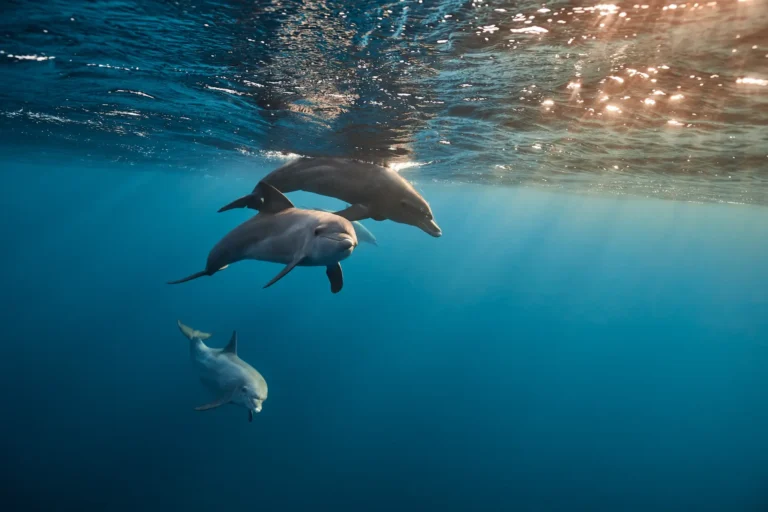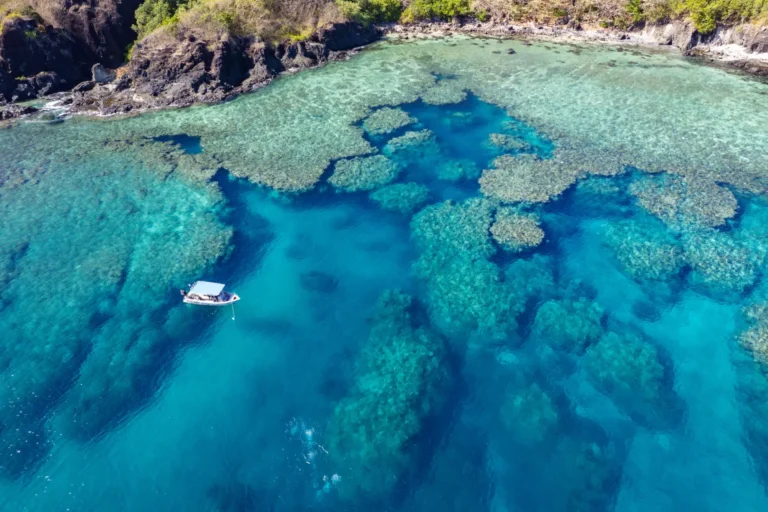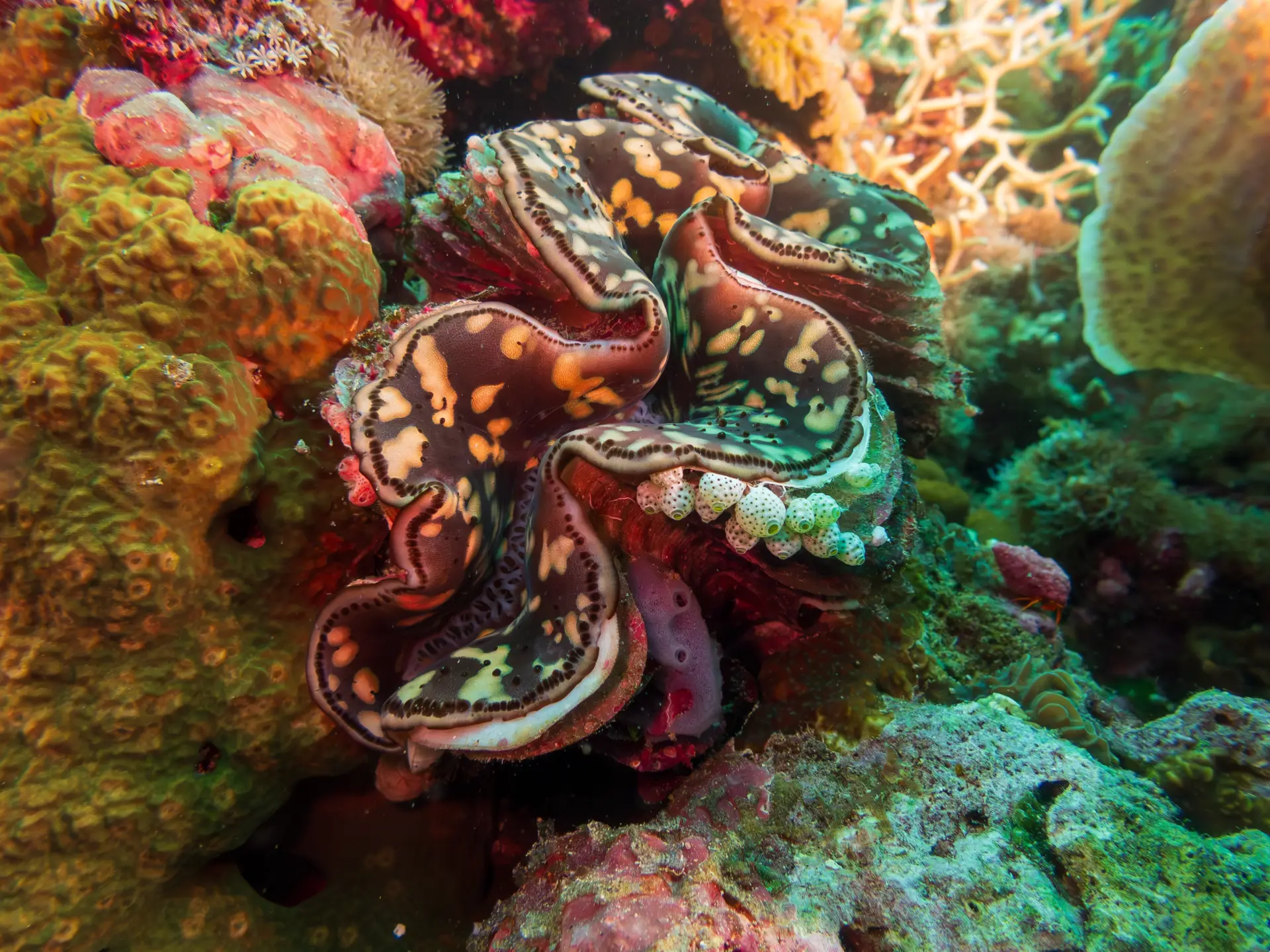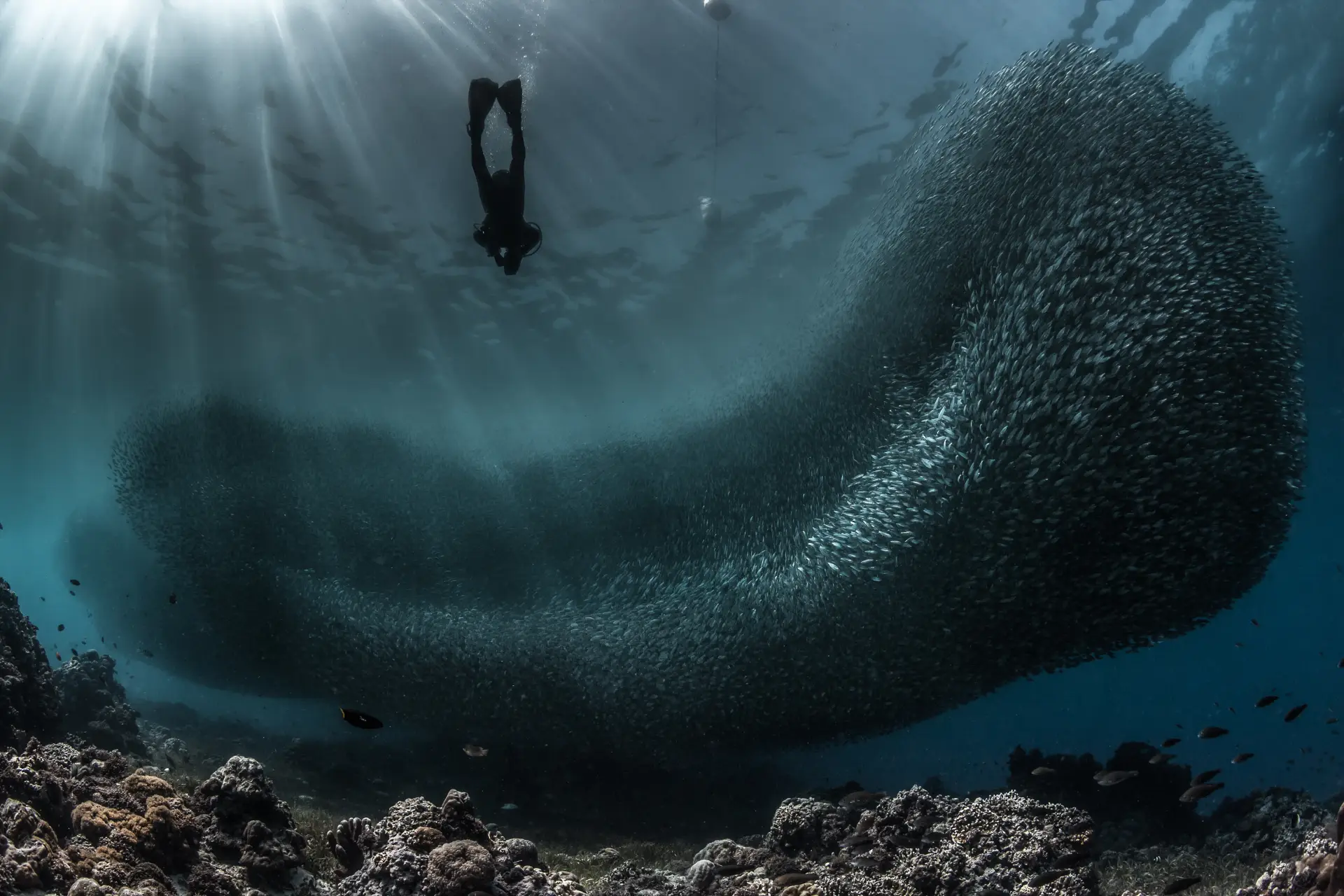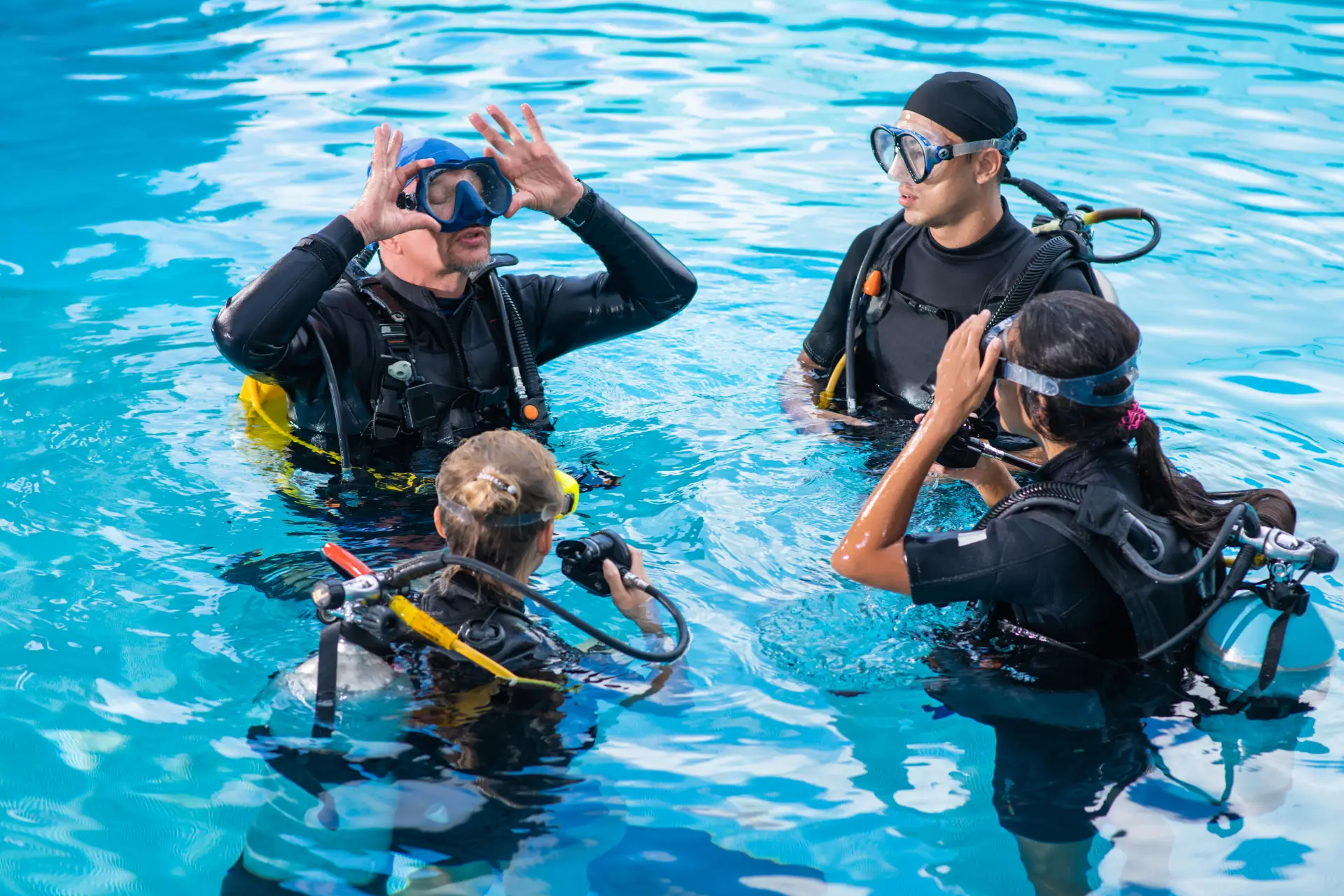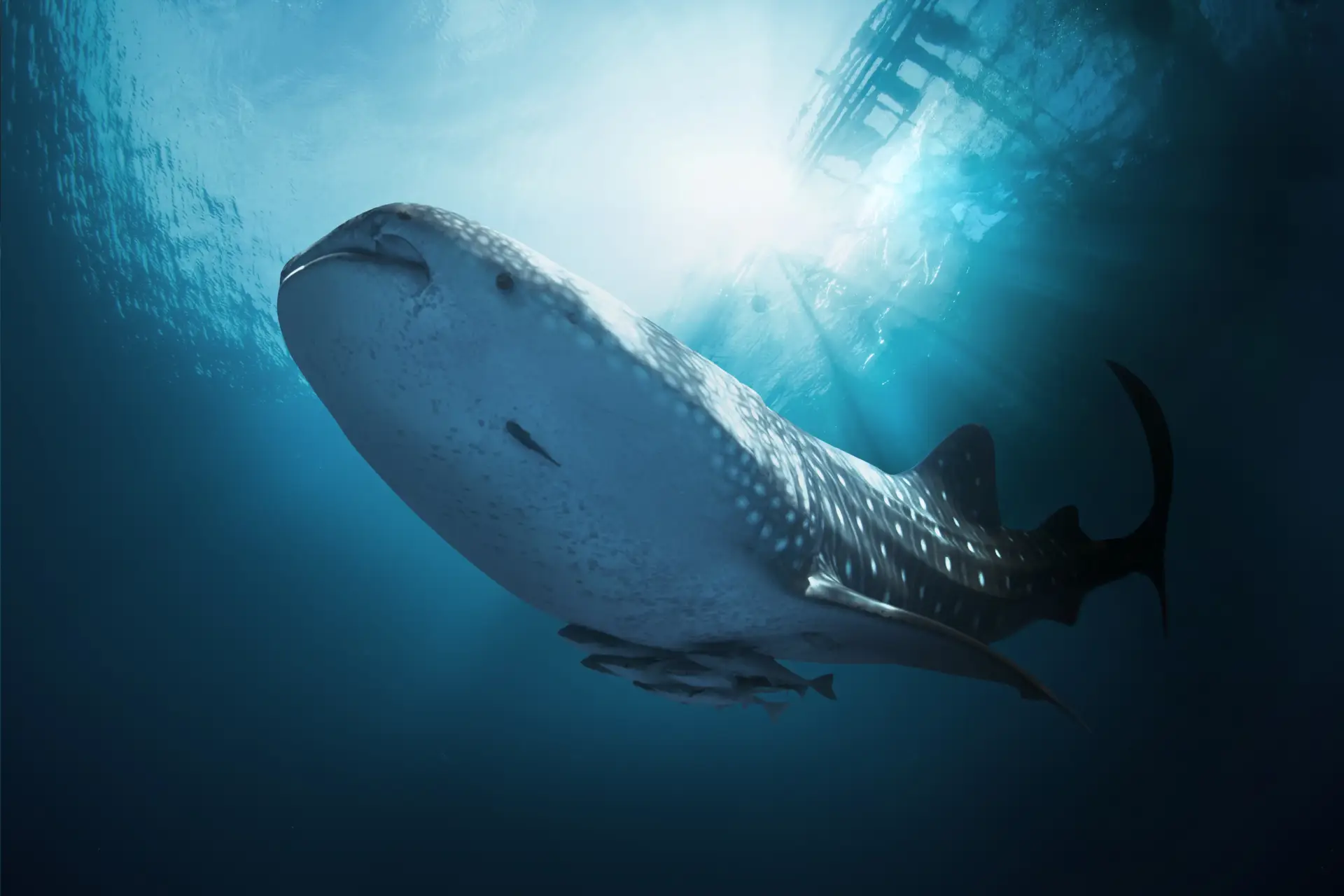The Secret Language of Dolphins: How These Intelligent Creatures Communicate
Dolphins are among the most intelligent and social creatures in the ocean, often captivating divers and marine enthusiasts with their playful nature and complex behaviors. But beyond their acrobatics and charming personalities, dolphins possess one of the most sophisticated communication systems in the animal kingdom.
In Bohol, divers and snorkelers have the incredible opportunity to witness wild dolphins in their natural habitat, especially around Pamilacan Island and the Bohol Sea. Understanding how dolphins communicate can deepen your appreciation for these remarkable animals and their intricate social structures. Let’s dive into the secret language of dolphins and uncover how these marine mammals interact with one another.
1. The Dolphin Communication Toolkit: Clicks, Whistles, and Body Language
Dolphins use a combination of vocalizations, echolocation, and body movements to communicate. Their language is not just sound-based, but also highly visual and physical, allowing them to interact effectively in their underwater world.
Clicks: The Dolphin Sonar System
- Dolphins use a series of rapid clicking sounds for echolocation, which allows them to navigate, hunt, and understand their surroundings.
- By emitting clicks and interpreting the returning echoes, dolphins can form a three-dimensional image of objects, even in dark or murky waters.
- Scientists believe dolphins may even use echolocation to identify individual dolphins based on unique body structures.
Whistles: Signature Calls
- Dolphins produce a variety of whistles, but their most unique form of communication is the signature whistle—a distinct sound that functions like a personal name.
- Each dolphin develops its own signature whistle shortly after birth, which it uses to identify itself within its pod.
- Dolphins also mimic the whistles of close companions, suggesting that they recognize and call out to specific individuals.
Body Language: The Silent Conversations
- Dolphins often slap their tails on the water (called a “tail slap”) to signal aggression, excitement, or alert their group.
- Leaping and spinning may serve multiple purposes, from play behavior to group coordination.
- Rubbing pectoral fins against one another is a sign of affection and social bonding.
- When hunting, dolphins sometimes use bubble trails and postures to coordinate movements with their pod.
Where to Observe This in Bohol:
- Pamilacan Island is one of the best places to witness wild dolphins using echolocation and social behaviors while traveling in pods.
- The Bohol Sea is known for its dolphin-watching tours, where guests can observe their leaps and interactions in the open ocean.
2. Do Dolphins Have a Language? Understanding Dolphin Intelligence
Many marine biologists believe dolphins possess one of the most advanced communication systems among non-human animals. But is it truly a language?
Dolphins and Syntax: Are They Forming Sentences?
- Researchers have found that dolphins arrange their whistles and clicks in structured patterns, similar to how humans form sentences.
- Some scientists believe dolphins combine sounds to convey complex messages, though this area of research is still developing.
Do Dolphins Have Names? The Importance of Signature Whistles
- Studies show that when a dolphin hears its own signature whistle, it responds to it as if being called by name.
- Dolphins also call out the names of their closest social bonds, proving they recognize and identify specific individuals.
Problem-Solving and Emotional Intelligence
- Dolphins have demonstrated problem-solving skills that rival primates, including cooperation in hunting, puzzle-solving, and tool use (such as using sponges to protect their snouts while foraging).
- They also display emotions such as grief, staying with deceased pod members for extended periods and showing signs of mourning.
Where to Observe This in Bohol:
- Watching dolphin pods in the wild near Balicasag Island or Pamilacan gives divers and snorkelers a chance to see their social intelligence at work.
3. How Dolphins Use Communication for Survival
Dolphins rely on their communication skills for a variety of essential behaviors:
1. Coordinated Hunting Strategies
- Dolphins work together to herd schools of fish into tight groups, making it easier to catch prey.
- Some pods use bubble nets or chase fish toward the surface where they become trapped.
- In Bohol, certain species like spinner dolphins can be seen leaping in coordinated patterns, likely signaling hunting behavior.
2. Social Bonds and Play Behavior
- Play is an important part of dolphin life and helps strengthen social bonds.
- Younger dolphins learn crucial skills through play, including how to communicate effectively within their pod.
3. Avoiding Predators and Navigating the Ocean
- By staying in tight-knit pods and constantly vocalizing, dolphins maintain group cohesion and safety.
- Their clicks and whistles may help warn others of potential threats, like sharks or human disturbances.
Where to Observe This in Bohol:
- Dolphin-watching tours in the Bohol Sea allow visitors to witness these cooperative behaviors in action. We often witness dolphins while completing our surface intervals or on our way to and from different dive sites.
4. The Ethical Way to Observe Dolphins in the Wild
As tourism around dolphin encounters grows, it’s crucial to promote responsible wildlife interactions. If you plan to observe dolphins in Bohol, follow these ethical guidelines:
✅ Choose Responsible Tour Operators
- Ensure they follow guidelines that do not chase, encircle, or disrupt dolphin pods.
- Operators should respect minimum distance requirements and turn off motors when near dolphins.
✅ No Feeding or Touching
- Feeding dolphins can disrupt natural behaviors, leading to dependency on human food.
- Never attempt to touch or swim toward wild dolphins, as this can cause stress.
✅ Observe from a Distance
- A good rule is to let dolphins come to you, rather than approaching too closely.
- If dolphins choose to interact with boats or snorkelers, it should be on their terms.
At Sierra Madre Divers, we encourage divers to respect marine life by following ethical practices. If you’re lucky, you may encounter dolphins naturally while diving—an unforgettable experience when done responsibly.
Final Thoughts: The Ocean’s Most Talkative Creatures
Dolphins are far more than playful ocean mammals—they are complex, intelligent beings with a rich and sophisticated way of communicating. Whether using clicks, whistles, or body signals, dolphins convey everything from their identity and emotions to social coordination and survival tactics.
In Bohol, we are fortunate to have the chance to observe these incredible creatures in their natural habitat. Whether you’re diving, snorkeling, or joining a dolphin-watching tour, understanding how dolphins communicate enhances the experience and deepens our connection to the ocean.
🌊 Want to see dolphins in the wild? Book a dive or snorkeling trip with Sierra Madre Divers and explore the magic of Bohol’s marine life today!

